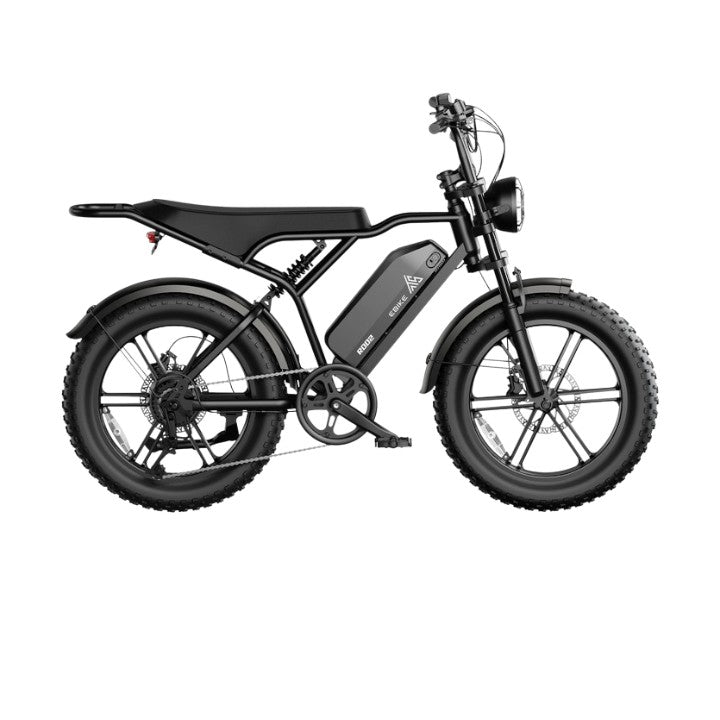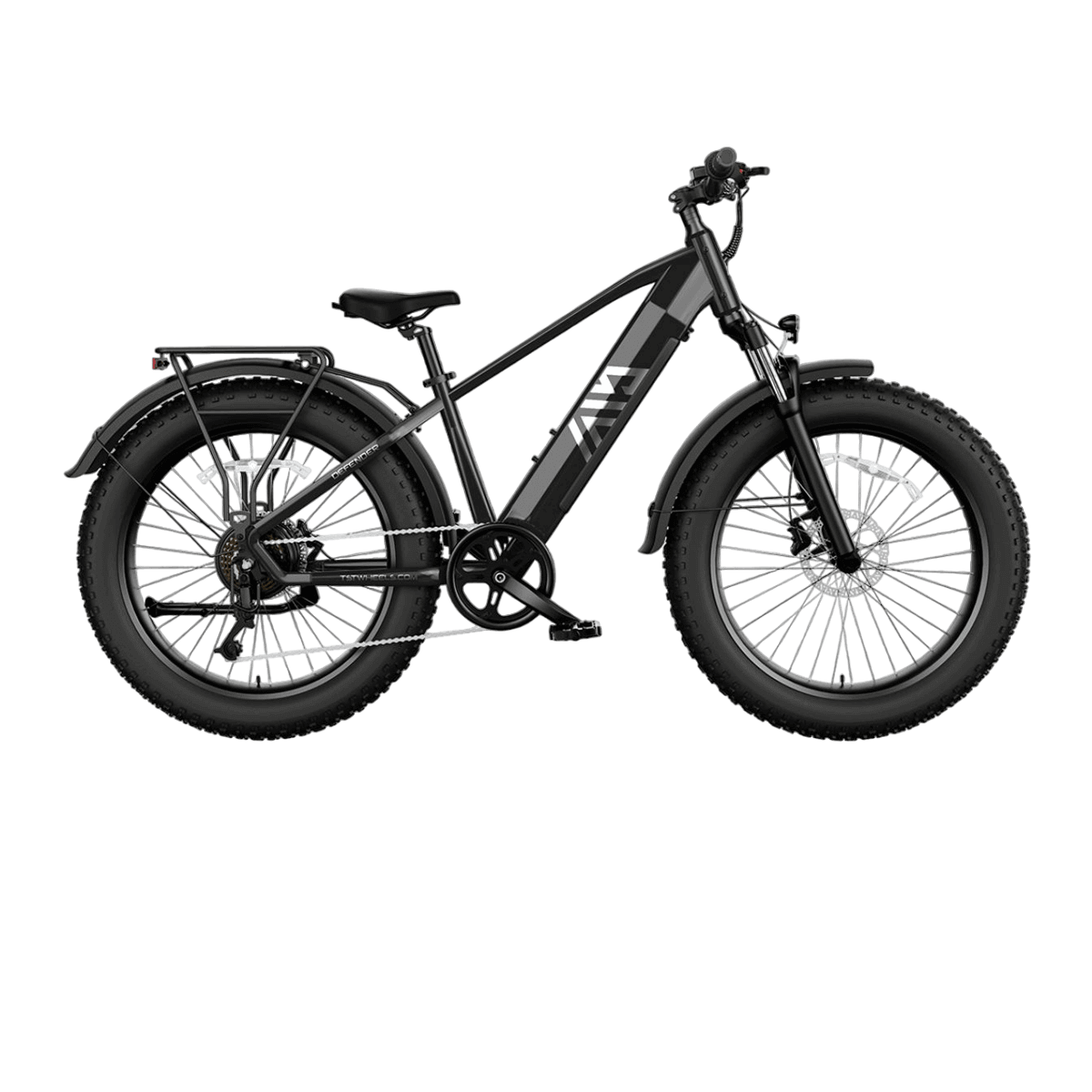Choosing between a thumb throttle and a twist throttle for your ebike depends on your riding style, hand size, terrain, and comfort preferences. Thumb throttles offer precise, easy control with less hand fatigue, while twist throttles provide a familiar motorcycle-like feel and quick speed adjustments. Selecting the right throttle enhances your riding experience and safety.
What Are the Key Differences Between Thumb Throttle and Twist Throttle?
Thumb throttles are controlled by pressing or rotating the thumb on a small lever mounted on the handlebar, allowing precise modulation of motor power without gripping the handlebar tightly. Twist throttles work by twisting the entire grip like a motorcycle throttle, offering intuitive control but requiring a firm hand grip. Thumb throttles often cause less hand fatigue, while twist throttles provide faster acceleration adjustments.
How Does Hand Size Affect the Choice Between Thumb and Twist Throttles?
Hand size plays a crucial role: riders with smaller hands generally find thumb throttles easier to operate because they require less reach and grip strength. Conversely, those with larger hands may prefer twist throttles, which accommodate a full-hand grip and allow smoother twisting motions. Matching throttle type to hand size improves comfort and control during rides.
Which Throttle Type Is Better for Different Riding Terrains?
Thumb throttles excel on rough or uneven terrains because they allow riders to maintain a firm grip on the handlebar with their fingers while controlling speed with the thumb, enhancing stability. Twist throttles can be harder to control on bumpy roads since twisting the grip requires a steady hand, which can be challenging when handlebars shake. For urban or smooth road riding, either throttle works well depending on preference.
Why Does Riding Style Influence Throttle Preference?
Riders who prioritize precise speed control and gradual acceleration often prefer thumb throttles because of their fine modulation capabilities. Those who enjoy quick acceleration bursts and a more natural feel similar to motorcycles lean toward twist throttles. Additionally, riders who frequently stop and start in traffic may find thumb throttles less tiring over time.
How Does Weather Impact the Use of Thumb vs. Twist Throttles?
In cold weather, thumb throttles can be less comfortable as the thumb may become cold or numb, making operation difficult without gloves. Twist throttles remain easier to use in winter since the whole hand grips the throttle, providing warmth and better control even with gloves on. Weather conditions should be considered when selecting a throttle type for year-round riding.
What Are the Safety Considerations for Thumb and Twist Throttles?
Thumb throttles can be safer on high-power ebikes because they allow the rider to maintain a steady grip with fingers while controlling throttle with the thumb, reducing accidental acceleration from handlebar movements. Twist throttles may unintentionally increase power if the rider tightens their grip to steady themselves, which can be risky on powerful bikes. Understanding these dynamics helps prevent accidents.
Chart: Comparison of Thumb Throttle vs Twist Throttle Features
| Feature | Thumb Throttle | Twist Throttle |
|---|---|---|
| Control Precision | High, fine modulation possible | Moderate, quicker but less precise |
| Hand Fatigue | Lower, less gripping required | Higher, requires firm grip |
| Familiarity | Less familiar to motorcycle riders | Familiar motorcycle-style control |
| Terrain Suitability | Better for rough, uneven terrain | Better for smooth, urban roads |
| Weather Friendliness | Less ideal in cold without gloves | Better for cold weather use |
| Safety on Powerful Ebikes | Safer due to stable grip and control | Risk of accidental acceleration |
Which TST EBike Models Feature Thumb or Twist Throttles?
| Model | Wheel Size | Terrain Suitability | Throttle Type |
|---|---|---|---|
| TST EBike 26-inch Model | 26-inch | Rough terrains like snow, sand | Thumb throttle |
| TST EBike 27-inch Model | 27-inch | Daily commuting, mountain biking | Twist throttle |
The TST EBike 27-inch model often comes equipped with a twist throttle, ideal for riders who prefer quick, familiar acceleration control during daily commutes and mountain biking. Meanwhile, the 26-inch model is frequently paired with a thumb throttle, offering precise control on rough terrains like snow and sand.
How Do Cost and Maintenance Differ Between Thumb and Twist Throttles?
Both throttle types are generally affordable and require minimal maintenance. However, twist throttles may incur slightly higher costs due to more complex grip mechanisms. Thumb throttles are simpler and easier to replace or repair. Budget-conscious buyers might lean toward thumb throttles for cost-effectiveness without sacrificing performance.
Buying Tips for Choosing Between Thumb and Twist Throttles
- Evaluate Your Riding Terrain: Choose thumb throttles for rough terrains and twist throttles for smooth urban roads.
- Consider Hand Size and Comfort: Smaller hands benefit from thumb throttles; larger hands may prefer twist throttles.
- Think About Weather Conditions: Twist throttles are better suited for cold climates.
- Assess Riding Style: For precise control, thumb throttles excel; for quick acceleration, twist throttles shine.
- Check Compatibility: Confirm which throttle type your preferred TST EBike model uses and whether it fits your needs.
- Test Ride Both: Whenever possible, try both throttle types to determine personal comfort and handling preferences.
When it comes to riding an electric bike (ebike), finding the right throttle control is essential. The throttle serves as a connection between the rider and the motor, allowing you to gain electric power when needed. In terms of throttle options, thumb throttles and twist throttles are two popular choices. Throughout this article, we'll explore the differences, advantages, and which one might be best suited for your riding style based on the two types of ebike throttles.
The Basics of Ebikes and Throttles
Electric bikes (e-bikes) often feature throttles that allow riders to control speed without pedaling. The two primary throttle types are thumb throttles, operated by pressing a lever with the thumb, and twist throttles, activated by rotating the handle grip. Both options provide motor assistance, enhancing the riding experience based on user preference.
Ebikes, short for electric bikes, have rapidly gained popularity as an innovative mode of transportation and recreation. These two-wheeled wonders combine the efficiency of traditional bicycles with the power of electricity to propel riders effortlessly through various terrains.
However, what truly sets ebikes apart from their conventional counterparts is the integration of throttles into their design. Throttles serve as a control mechanism that allows riders to regulate the amount of power delivered by the electric motor.
Whether it's a thumb throttle or a twist throttle, this feature grants users unprecedented convenience and adaptability while riding. By simply engaging the throttle, cyclists can summon instant propulsion without needing to pedal continuously—making uphill climbs or battling headwinds significantly more manageable.
Moreover, throttles provide added flexibility for individuals who may experience physical limitations or fatigue during longer rides since they can rely more heavily on electrical assistance when needed most. All in all, ebikes equipped with throttles offer an exhilarating and efficient means of traversing landscapes while minimizing exertion levels – revolutionizing modern cycling experiences for enthusiasts worldwide.
Thumb Throttle VS Twist Throttle
Thumb throttles are praised for their simplicity and ease of use, especially beneficial for riders with limited hand mobility. They allow quick speed adjustments and are ideal for varied terrains. Twist throttles offer smooth and intuitive speed control, resembling motorcycle operation, making them suitable for steady rides on consistent terrains.
1. Thumb Throttle:
A thumb throttle is exactly what its name suggests - a lever or button located near the handlebar that is operated by pressing with your thumb. This type of throttle provides precise control over acceleration while allowing riders to maintain a firm grip on the handlebars.
Advantages:
- Enhanced Stability: With a thumb throttle, you can keep both hands securely on the handlebars while operating the throttle. This feature makes it particularly advantageous for off-road ebikes or any situation where maintaining balance is crucial.
- Fine Control Adjustments: Thumb throttles allow riders to make more subtle adjustments to their speed due to their design. This precision is especially useful when navigating tricky terrain or crowded areas.
2. Twist Throttle:
A twist throttle is commonly found not only on electric bikes but also motorcycles and scooters. It usually takes the form of a handlebar grip that can be twisted or rotated to control speed accurately.
Advantages:
- Familiarity: Many riders are already accustomed to twist throttles since they have been used in various vehicles for years. If you've ridden bicycles before transitioning to an ebike, using a twist throttle may feel more natural.
- Quick Response Time: Twist throttles provide quicker response times when accelerating compared to thumb throttles due to their straightforward design.
Which One Should You Choose?
Choose a thumb throttle if you prioritize quick responsiveness and have limited hand strength. Opt for a twist throttle if you prefer gradual acceleration and a motorcycle-like feel. Your choice should align with your riding style, hand comfort, and terrain preferences.
The choice between a thumb throttle and a twist throttle largely depends on your specific needs and riding style. Here are some factors to consider:
1. Terrain and Riding Conditions:
- Off-road or Rough Terrain: If you plan to ride off-road or in challenging terrains, such as mountain trails, a thumb throttle might be more advantageous. The ability to keep both hands securely on the handlebars while operating the throttle provides better stability and control.
- Commuting or Smooth Surfaces: On the other hand, if you primarily use your ebike for commuting on smooth surfaces like roads or bike paths, a twist throttle may be more suitable.
2. Physical Limitations or Preferences:
Consider any physical limitations you may have when choosing between thumb throttles and twist throttles. If you have limited hand dexterity or find it easier to operate controls with your thumb, then a thumb throttle might be the better choice for you. Conversely, if gripping objects firmly or performing twisting motions is challenging, then a twist throttle may not be ideal.
Ultimately, choosing between these two types of throttles comes down to personal preference and what feels most comfortable for you as a rider. Some individuals prefer the familiarity of twist throttles due to their widespread use in various vehicles over the years. Others appreciate the enhanced stability and fine control adjustments provided by thumb throttles.
Maintenance and Durability of Each Type of Throttle
Both thumb and twist throttles require regular cleaning to maintain performance. Thumb throttles have fewer moving parts, potentially leading to less maintenance. Twist throttles, while offering smooth control, may need more frequent checks due to their mechanical complexity.
When it comes to the maintenance and durability of thumb throttle and twist throttle systems, attention to detail is key. Both types of throttles require regular inspection and cleaning to ensure optimal performance. For a thumb throttle, it is crucial to keep an eye on the rubber grip that encases the control mechanism. Over time, this grip may wear down or become damaged due to continuous use or exposure to harsh weather conditions. This can compromise both comfort and functionality, making it essential to replace worn-out grips promptly. Additionally, periodic lubrication of the moving parts within the thumb throttle ensures smooth operation while preventing excessive friction-induced wear.
On the other hand, twist throttles demand specific care as well. These mechanisms rely on a rotating motion for acceleration control, necessitating special attention towards their inner workings. Regularly inspecting the cables connecting the twist grip with its corresponding components becomes imperative because frayed or stretched cables can hinder its responsiveness or even render it inoperative altogether. A thorough examination should also extend towards checking for any signs of rust or corrosion around pivot points and springs within the twist throttle assembly.
Furthermore, protecting these throttling devices from extreme temperatures and moisture greatly contributes to their longevity. Proper storage conditions are paramount when not in use; exposure to direct sunlight may cause degradation over time while excess humidity might lead to internal damage due to condensation build-up.
Final Decision: Which One is Right for You?
Your ideal throttle depends on personal comfort and riding needs. Test both types to determine which feels more natural and suits your typical riding conditions. Consider factors like hand strength, desired control precision, and terrain to make an informed choice.
In conclusion, an ebike's throttle is an essential component that can significantly impact your riding experience. Thumb throttles offer enhanced stability and precise control adjustment while allowing riders to maintain secure grip on handlebars - making them particularly suitable for off-road rides. At TST, all of our ebikes equipped with thumb throttles.Twist throttles provide quick response times during acceleration but require larger motion for precise control adjustments.
When selecting an ebike with either type of throttle option available (or even customizing one), carefully consider your own preferences, terrain requirements, physical limitations/preferences before making your decision – ensuring that it enhances both comfortability & enjoyment throughout each journey!







Leave a comment
All comments are moderated before being published.
This site is protected by hCaptcha and the hCaptcha Privacy Policy and Terms of Service apply.